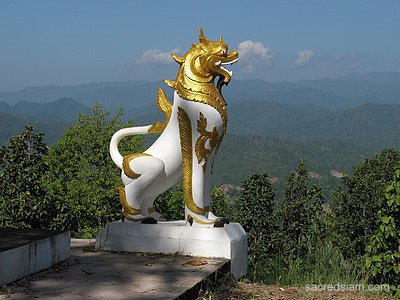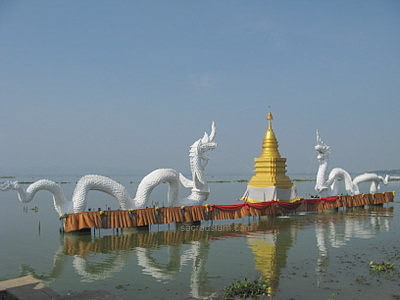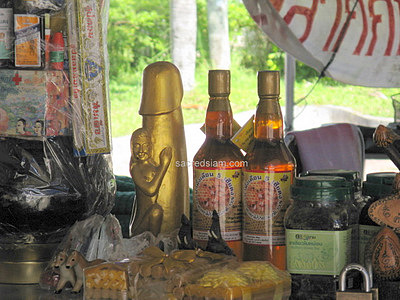Much of present-day Thailand's culture is founded on a variety of sacred belief systems, including Theravada Buddhism,
Mahayana Buddhism, Brahmanism (the precursor to modern Hinduism), animism, shamanism and beliefs imported by Chinese immigrants. To
most Thais, these various beliefs complement rather than conflict with each other. Temples, shrines, murals, mountains, spirit houses, monuments, palaces,
monks, spirits, deities, ghosts, amulets, tattoos, festivals, chants, mantras, occult spells and astrology are all part of the rich tapestry
of Thai sacred belief.
Thailand can be divided into five geographical regions: North, Northeast, Central, East and South. The upper North - known as Lanna - is a mountainous,
sacred land in which by tradition the Buddha is believed to have walked and left relics.
The northern dialect (kham meuang) is widely spoken there and the women are said to be fair-skinned and beautiful. The Lanna Kingdom was a vassal of Burma from 1558 until 1775,
so there is some Burmese influence in temple architecture.
The lower North is in the upper central plains area, centered around what was once the ancient kingdom of Sukhothai. Central Thai is spoken there.
The central region contains the old capitals of Ayutthaya, Thonburi and Bangkok. It features both Khmer and Rattanakosin (Bangkok-era) architecture, as well as some Mon temples.
The southern region was once the northern tip of the Srivijaya Kingdom and is home to a famous temple in Nakhon Sri Thammarat.
These are the locations included in this website:
Upper North
Lower North
Northeast
Central
South




